https://www.freepressjournal.in/interviews/goodness-at-the-grassroots
Priti Adani focusses on the grassroots
21 October, 2019
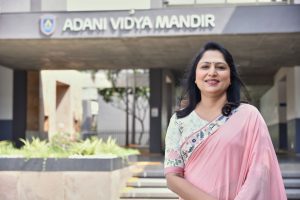 A good corporate enterprise is not just about an organisation with a business plan and one which generates profits. It is also one which touches people’s lives – starting from those who work with it, to the community and even the nation.
A good corporate enterprise is not just about an organisation with a business plan and one which generates profits. It is also one which touches people’s lives – starting from those who work with it, to the community and even the nation.
That was one reason why Dr. Priti G. Adani opted to focus on the grassroots – education, skill development and health and sanitation. She is the chairperson of Adani Foundation. And given her training as a medical practitioner, it was inevitable that she would look at health services as well.
Today, the Foundation touches more than 3.2 million lives in as many as 2,250 villages across 18 states — through its work in Education, Community Health, Community Infrastructure Development and Sustainable Livelihood Development.
She spoke with RN Bhaskar, in a free-wheeling interview, on what the Foundation had managed to achieve.
What would you consider to be the most important activity for your Foundation?
School education would possibly be the one activity that I am most concerned about. Of course, this goes hand in hand with skill development, health and sustainable livelihood development. But the key building block is school education. It is here that the child gets its values and its dreams.
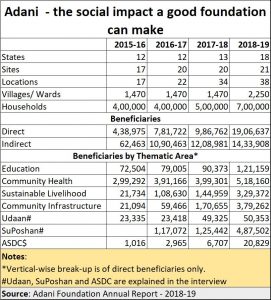 That is why we set up Adani Vidya Mandir in Ahmedabad (AVMA) in 2009. Today, it is the first cost-free school in India to receive NABET Accreditation by the Quality Council of India. It is a benchmark in the field of education. AVMA provides education to bright students from underprivileged backgrounds and accounts for an enrolment of around 1,087 students.
That is why we set up Adani Vidya Mandir in Ahmedabad (AVMA) in 2009. Today, it is the first cost-free school in India to receive NABET Accreditation by the Quality Council of India. It is a benchmark in the field of education. AVMA provides education to bright students from underprivileged backgrounds and accounts for an enrolment of around 1,087 students.
Thereafter, we set up many other schools. All our schools are of two types. Some hav been set up by us where we adopt the CBSE (Central Board of Secondary Education) curriculum. Then there are schools which belong to respective state governments, and where we work with the respective state to upgrade the quality of education imparted. Those are usually schools which adopt the SSC (secondary school certificate) curriculum of the home state government. But English remains a compulsory subject even in these state-owned schools. Parents want their children to learn this language because they see it as an aspiration, a window to future growth. However, with both types of schools, our focus remains the same – the child.
We thus provide quality education to over 120,000 children through 600 schools and bal-wadis.
 Typically, the most crucial aspect that goes into any child’s education is the quality of the teacher. How do you achieve this in government-run schools, where the teachers too are government appointed?
Typically, the most crucial aspect that goes into any child’s education is the quality of the teacher. How do you achieve this in government-run schools, where the teachers too are government appointed?
We must bear in mind that even governments have a process in place for the recruitment of teachers. What is missing is motivation, and a sense of accountability. In fact, the government pays quite well, in many cases higher than what we pay our own teachers. But if you adopt a model that focusses on teacher improvement, constant monitoring and motivation, you can actually transform the quality of their output. We have seen all-round improvement in educational standards even in the government schools adopted by us. The proof of this is the clamour by parents to get their children admitted into schools managed by us, even over private schools in those localities. The proof is also there in the outcomes – the children from these schools perform better, turn out to be the brightest children in their respective communities.
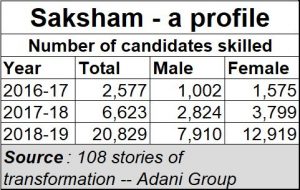 You work on skill development at well. Could we know more about this work?
You work on skill development at well. Could we know more about this work?
All our skill-development and personality-development programmes come under our flagship programme called Udaan. Its objective is to encourage young minds to develop an interest in all sorts of enterprises and to encourage them to dream big in life, In other words, it tries to teach children to think big – to fly – which is what Udaan means.
One way of doing this is by taking students on exposure visits to the group’s power plants and ports. This allows students to appreciate the scale of the group’s various businesses, and to also begin to orient themselves to the type of role they might want to take up later in their own lives.
More than 2.76 lakh students, teachers and youth from more than 3,500 schools and institutes have participated in this project over the past few years.
But Udaan itself has three other components.
One is Adani Vidya Mandir. This is a programme targetted towards breaking the cycle of anaemia in women and malnourishment in children below the age of 6 years. SuPoshan Sanginis (women helper-friends) who are from the community ensure the right medical and social support. This encourages mothers to adopt healthy lifestyles. Today, our SuPoshan programme is spread across 14 states in more than 3 lakh households.
The second is Saksham. This is the Adani Skill Development Programme (ASDC) aimed at bridging the skill gap among the youth, to make them employable and thus contribute towards nation building. This programme partners with the government’s National Skill Development Corporation (NSDC). and has trained over 30,000 youths (see chart). Some of its innovative courses include simulator-based crane operation, 3D printing, and welding through Augmented Reality. At the moment, we have over 65 Saksham centres operational across eight states in India offering skill training in 45 trades. Significantly, a large number of the candidates are women.
The third part of the Udaan programme is focused on Safety and Environment. To make this programme relevant, we have established an Occupational Health and Safety (OH&S) Policy and a Safety Manual. We have identified the legal requirements as well — in operation and maintenance activities. Once again, the objective is to ensure the concerns that surround health and safety.
Our sites go beyond what is required statutorily. We aim to achieve continual improvement year after year. For this, we have won awards and accolades from many organisations and safety forums.
Helping India meet its energy needs while minimising the impact on the environment is also a crucial challenge. Our environment protection initiatives aim to help curb the dangers of eroding landscapes and convert them into fertile, greener blankets of land.
An exemplary achievement in this regard is the revival of the ecologically sensitive areas like Mundra, where we have conserved and extended mangrove afforestation. We are at the forefront when it comes to improving efficiency and reducing waste.
The Foundation works very closely with group companies to ensure that this vision is nurtured year after year. Our efforts have won them awards from several prestigious bodies in India and overseas.
You have also been active on the health services front. We hear about the mobile ambulances that you have introduced in various regions…
Yes. We do aim at bringing quality medical care to a vast population of underprivileged people, through Mobile Health Care Units, Rural Clinics and General Medical Camps. We reach out to around 500,000 people annually through these initiatives, which includes a significant numbers of senior citizens as well.
Situated in the centre of Bhuj, Gujarat, Adani Institute of Medical Sciences, along with the GK General Hospital, is the biggest hospital in the district. On an average, 1,700 patients are attended to and 50 surgeries are conducted every single day at this 750-bed hospital. In addition, 48 general health and specialty camps were organised in various interior villages of Kutch. Their effect has been tremendous. As a result some 25,000 patients have benefitted from with specialised treatment.
In order to spread awareness about the services available in the hospital, 11 awareness camps and 293 village level meetings were organised in rural Kutch.
What other activities does your Foundation embrace?
We work with local authorities to restore and improve existing infrastructure relating to education, health, water, sanitation and other basic services. The initiatives include upgradation of medical infrastructure, creation of check dams, provision of household toilets, provision of drinking water facilities, improving the school infrastructure etc.
Simultaneously, in keeping with our mission of health and growth, we promote the creation of a climate of cleanliness. We have reached out to 5,700 schools across 19 states and have more than 80,000 swachhagraha (cleanliness centre) members, spreading the message further to 26,50,000 students.
Swachhagraha also reaches out to 12 crore citizens through community outreach encouraging them to take personal responsibility in maintaining cleanliness at public places and thus become Swachhagrahis.
Other programmes relate to promoting self help groups, for adopting new and innovative techniques in crop production, animal husbandry, fisheries etc. Adani Foundation is helping more than 25,000 families through these initiatives.































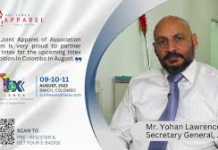








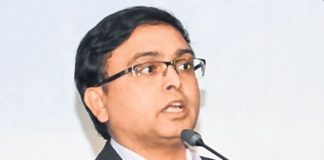
COMMENTS